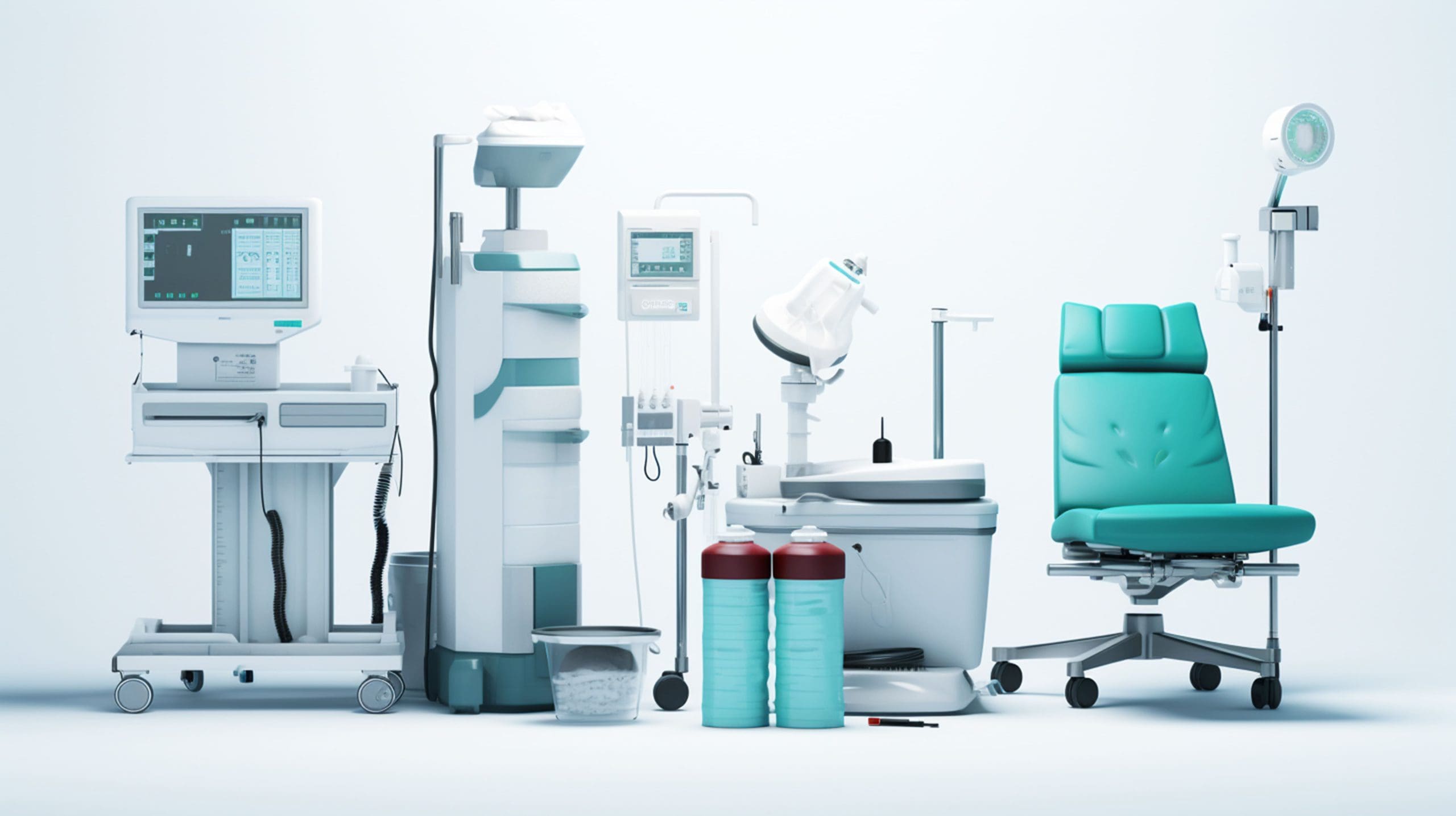India medical devices market is experiencing significant growth driven by infrastructure development, policy reforms, and growing private-sector engagement. As of 2024, India accounted for only 1.65% of the global medical devices market and is ranked 4th largest MedTech market in Asia. However, the country heavily relies on import. In 2024, over 70% of medical devices used in India were imported. The market is witnessing rising private investment. The country’s regulatory upgrades including reclassification of medical devices under CDSCO’s licensing framework is further driving the growth in the market. India is not just participating but actively shaping the future of the global MedTech landscape.
What’s Driving the Medical Devices Market in India?
The advancement in technology and integration of AI in India’s healthcare infrastructure is driving the medical devices market. Healthcare facilities are adopting AI-enabled devices to enhance diagnostics and treatment across various departments. These devices help in detecting diseases like cancer, heart conditions, and neurological disorders through medical imaging.
Infrastructure development and establishment of medical parks such as the Andhra Pradesh MedTech Zone (AMTZ) and the upcoming MedSpark in Kerala, provides state-of-the-art infrastructure for manufacturing and R&D. These parks aim to reduce production costs and encourage domestic manufacturing.
The increasing prevalence of chronic diseases and an aging population are driving demand for advanced medical devices. This trend is further supported by the expansion of healthcare infrastructure and increased health awareness among the population. The India-UK Free Trade Agreement (FTA) has led to reduced tariffs on essential medical devices, encouraging Indian firms to expand exports and potentially lower costs for domestic consumers.
Government-Led Initiatives
The Indian government has launched Production Linked Incentives Schemes with the aim to reduce dependency on imports and boosting domestic manufacturing. This policy aims to expand India’s global market share in medical devices from the current 1.5% to 10–12% over the next 25 years. Thus, enhancing the production of high-end medical devices and foster innovation in the sector.
Market Competition
The India medical devices market is moderately concentrated with few major players dominating the market. The key players include Meril Life Sciences, Wipro GE Healthcare, Sysmex Corporation, and Zydus Lifesciences. Meril Life Sciences has recently developed the MeRes100 bioresorbable scaffold which is India’s first domestically produced bioresorbable scaffold for treating coronary artery disease. Meanwhile, Wipro GE Healthcare which is a joint venture between India’s Wipro Enterprises and GE Healthcare has announced a $960 million investment over five years to bolster R&D and manufacturing in India.
High Import Dependency
The India medical devices market is witnessing a major challenge of heavy reliance on imports mainly for the high-end and critical care equipment. As of 2024, 80–90% of high-end diagnostic imaging equipment (MRI, CT scanners) were imported and nearly 100% of the capital-intensive radiation therapy equipment were foreign-made. These dependencies lead to high prices due to custom duties, currency exchange rates, and freight charges. Additionally, newer global innovations take longer to reach Indian hospitals hindering advancements.
Future Outlook
The India medical devices are expected to undergo significant transformations in the upcoming yeas as the demand for quality healthcare continues to rise. By 2030, India is expected to manufacture over 80% of low- to mid-end medical devices domestically. This growth will be driven by operationalization of multiple MedTech parks and incentives under the Production Linked Incentive (PLI) scheme. Moreover, reduced tariffs and streamlined product registrations will lead to 5x increase in medical devices exports by 2030. Hospitals in India are set to adopt AI-powered diagnostic solutions across radiology, pathology, and cardiology departments in over 700 tertiary-care hospitals by 2030. India will not only build for internal demand but is positioning itself as an innovation and export hub in the MedTech space.
Consultant at Nexdigm In their latest publication “India Medical Devices Market Outlook to 2030: By Product Type (Diagnostic Imaging Devices, Surgical Instruments, Patient Monitoring Equipment, Orthopaedic Devices, Dental Devices), By Application (Hospitals, Diagnostic Laboratories, Home Healthcare, Ambulatory Surgical Centres, Rehabilitation Centers), and By Distribution Channel (Direct Sales, Distributors and Wholesalers, Online Retail)” believe that businesses should prioritize domestic substitution for high-dependency imports in imaging and orthopaedic devices along with leveraging AI and embedded software as differentiator.
Contact Us

